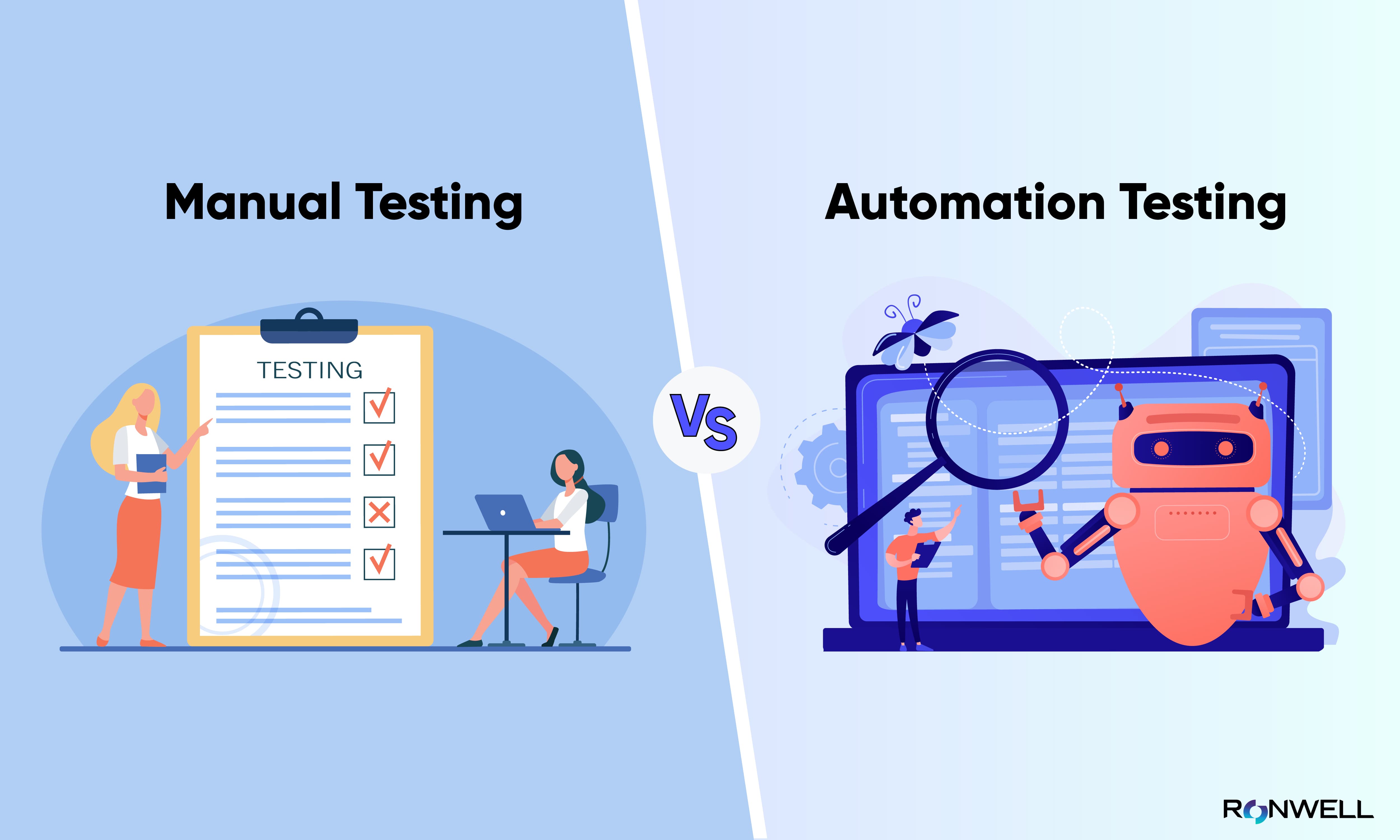Efficient Automation Testing: Enhancing Software Dependability and Speed
Efficient Automation Testing: Enhancing Software Dependability and Speed
Blog Article
From Guidebook to Automated Screening: A Comprehensive Guide to Transitioning Efficiently and Properly
In the world of software screening, the shift from manual to automated procedures has ended up being a significantly essential shift for organizations seeking to improve effectiveness and precision in their testing practices. As innovation proceeds to breakthrough, the requirement for effective and smooth automatic testing methods has actually never ever been a lot more important. The journey from manual to automated testing is not without its challenges, yet when approached purposefully and with a clear plan in mind, the advantages can be considerable - automation testing. In this extensive overview, we will certainly explore key steps and factors to consider necessary for a successful transition, from the preliminary choice of devices to the combination of automation into existing operations. Stay tuned to reveal the insights that will aid lead the way for a smoother and a lot more effective testing process.
Advantages of Automated Testing
Automated screening provides countless advantages, boosting performance and precision in software growth procedures. One key benefit is the considerable reduction in screening time. Automated examinations can be run concurrently on multiple tools and operating systems, considerably speeding up the testing stage compared to manual screening. This raised performance enables faster responses on the top quality of the software, allowing developers to determine and address concerns quickly.
Furthermore, automated testing ensures a greater degree of precision in spotting flaws. Uniformity in screening is additionally enhanced, as automated tests execute the very same actions precisely each time they are run.
Choosing the Right Tools

First of all, assess your requirements and goals. Comprehend the extent of your project, the innovations included, and the capability of your group. This evaluation will help you figure out the attributes and capabilities you call for in your screening devices.
Second of all, take into consideration the compatibility of the tools with your existing processes and systems. Smooth assimilation with your current software program advancement lifecycle is important to make sure a smooth change to automation.
Furthermore, assess the scalability and flexibility of the tools. As your testing requires advance, the devices must have the ability to adapt and suit adjustments successfully.
Finally, factor in the support and neighborhood around the tools. Durable support and an active customer community can provide valuable sources and assistance when applying automated testing. By carefully thinking about these facets, you can pick the right devices that straighten with your demands and set the stage for an effective transition to automated testing.
Writing Reliable Examination Scripts

When crafting test manuscripts, it is vital to take into consideration the certain click for info needs of the software being checked and guarantee that the manuscripts resolve all essential performances. Clear and detailed naming conventions for test scripts and examination cases can boost readability and maintainability. Additionally, integrating error handling mechanisms within the examination scripts can aid in recognizing and attending to problems immediately.
Furthermore, organizing examination scripts right into modular components can enhance reusability and scalability, reducing redundancy and boosting performance in examination script maintenance. Regular evaluations and updates to test manuscripts are vital to keep speed with developing software program requirements and performances. By following these concepts, testers can develop durable and reliable test scripts that contribute considerably to the success of automated testing procedures.
Integrating Automation Into Workflows
Effective assimilation of automation tools right into existing workflows enhances and simplifies procedures productivity within software application development cycles. When incorporating automation into operations, it is essential to identify repeated jobs that can be automated to conserve time and lower human error. By flawlessly integrating automated testing tools like Selenium or Appium into the software growth lifecycle, teams can achieve faster feedback on code modifications, causing quicker bug detection and resolution. This combination enables for continuous testing throughout the development process, making sure that any type of concerns are determined beforehand, leading to higher software program high quality. In addition, automation can be utilized to activate tests immediately after each code devote, offering prompt recognition and releasing up testers to focus on more complex circumstances. Appropriate assimilation of automation tools needs cooperation between development, screening, and operations teams to develop a unified process that enhances performance and efficiency in supplying high-quality software.
Ensuring a Smooth Change
Efficiently transitioning to automated testing involves precise preparation and mindful execution to take full advantage of and lessen interruptions efficiency in the software application growth process - automation testing. To guarantee a smooth shift, it is essential to start by performing a detailed assessment of the current testing procedures and determining areas where automation can bring one of the most considerable benefits. Involving with all stakeholders early on at the same time, including developers, testers, and task supervisors, is essential for garnering assistance and buy-in for the automation effort
Interaction is key throughout this shift stage. Clear communication of the objectives, benefits, and assumptions of automated testing helps to manage any resistance or concerns that may occur. In addition, offering adequate training and sources for staff member to upskill in automation tools and techniques is vital for making sure a successful change.

Verdict
To conclude, transitioning from handbook to automated screening provides many benefits, consisting of raised performance and integrity. By selecting the ideal devices, composing efficient test manuscripts, and incorporating automation seamlessly into operations, organizations can make sure a effective and smooth shift. It is necessary to welcome automation as a useful possession in software application screening processes to view it enhance general quality and productivity.
In the world of software screening, the change from handbook to automated procedures has ended up being an increasingly vital change for organizations seeking to improve effectiveness and precision in their testing methods. Automated tests can be run simultaneously on multiple gadgets and running systems, significantly speeding up the screening phase compared to hands-on screening. Uniformity in testing is likewise improved, as automated tests implement the same steps specifically each time they are run.To guarantee the successful application of try this site chosen screening tools, the creation of efficient test manuscripts plays an important role in verifying the functionality and efficiency of automated processes - automation testing. By adhering to these concepts, testers can create robust and effective examination scripts that contribute significantly to the success of automated testing procedures
Report this page